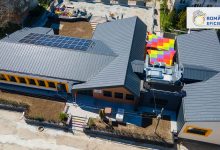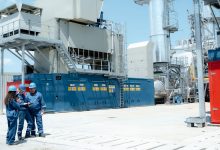Cohesion Policy contributes to the Energy Union strategy
Supporting coal regions in transition
On October 9, the Vice-President of the European Commission for the Energy Union Maroš Šefčovič and the European Commissioner for Regional Policy Corina Cretu hosted the high-level event ‘Energy Union in motion – Cohesion Policy supporting coal regions in transition’ in Brussels. The event, which took place in the framework of the European Week of Regions and Cities, gathered key policy-makers from coal regions in transition from Czech Republic, Germany, Poland, Romania and Slovakia.
“The EU committed not to let behind anybody and no region in the transition process toward a law carbon emissions economy. The Cohesion Policy makes significant investments in promoting growth and job creation in coal regions by giving them support for identifying, developing and investing in those areas in which they can become competitive – what we call ‘smart specialisation’,” Corina Cretu stated.
Promoting clean energy, accelerating the transition towards a low-carbon economy and fighting climate change are amongst the European Commission’s top priorities, in line with the Paris Agreement and the EU’s global leadership on climate action, as showed at the recent One Planet Summit event in New York.
Many European regions are well positioned to take advantage of the new opportunities arising from these technological and industrial changes, while others face deindustrialisation and job losses. In this shift to a modern and clean economy, the goal of the Commission is to ensure that no region is left behind when moving away from an economy driven by fossil fuels.
In 2017, the Platform for Coal Regions in Transition was launched, as part of the Coal and Carbon-Intensive Regions in Transition Initiative, a key action from the Clean Energy for All Europeans package. The aim of the Platform is to assist Member States and regions in their efforts to modernise their economies and prepare them to deal with the structural and technological transition in coal regions. It brings together regions, national authorities, societal and business stakeholders, innovation and financing experts in order to identify the best ways to seize the opportunities of the transition.
EU Cohesion Policy contributes to the initiative by providing a structural and long-term response to industrial transition and restructuring of European regions, including the coal and carbon-intensive regions. Thanks to the direct and constant contact with regional partners on the ground, Cohesion Policy helps regions achieve economic transformation by building on their ‘smart specialisation’ assets, i.e. their niche areas of competitive strength, with the aim to embrace innovation and decarbonisation.
Europe’s coal regions have received several billion euros of EU funds to foster investments in growth and jobs, focusing on SMEs, business incubators, innovation and research, capacity building and skills, as well as support for sustainable transport and social inclusion and for overall societal transformation and modernisation, including an important focus on the shift to a low-carbon economy.
Moreover, in view of preparing for the next budgetary period, the European Commission has launched a second set of pilots, ‘regions in industrial transition’, with a broader focus on the transition to a low-carbon economy. Twelve regions have already started to work in partnership with teams of experts from the European Commission to boost their innovation capacity, remove investment barriers, equip workers with the right skills and prepare for industrial and societal change, based on their smart specialisation strategies. For the next financial period, the Commission has proposed for smart specialisation strategies to take into account the challenges linked to industrial transition, such as the decarbonisation challenge.
The ‘Energy Union in motion – Cohesion Policy supporting coal regions in transition’ event was the occasion to communicate on the progress achieved and the perspectives of the Member States and regions in their further work towards the clean energy transition.







